I had some customers a while back that wanted to use poles for smash training. With this type of training you are smashing the tip of the pole into various objects on the floor very hard and often. (Remember the scene from Warriors Two where they are smashing walnuts? It is the non-theatrical version of this training). It is one of the most intense uses of the long pole.
Around that time I had about 20 different poles in my garage, so I was able to fully test these poles for flexibility and strength. This is what I found and how I tested.
Testing: I simply smashed the tips of the poles on the ground all the poles I had as hard as I could – I tried to break them with a minimum of 10 hard hits each. I also applied extra pressure once the pole hit – trying to bow the pole down as much as possible to see if the pole would break. I used both heavy hits and a snapping/whipping type hit. With each hit I slightly rotated the pole. This way the pole would break if there was a weak point in any area. Truly, I beat the hell out of these poles. I was really expecting the poles to snap at any moment – as I’ve broken numerous ones before.
Disclaimer: Keep in mind that wood is wood – and that doing this type of testing (or training) voids any warranty from the manufacturer. Almost no pole maker will refund you for a broken pole, unless there are obvious signs of hidden dry rot within a pole – in which case a pole tends to break quite easily. We do see maybe 1-2% of poles break for this reason and they are always replaced – however beating a piece of wood to death and having it break is NOT covered under warranty – you can always break wood if you try.
Quick Thoughts: Except for the economy laminate, which I know breaks with a semi-hard hit, all of them help up well. However, a few scared me. Poles with a * are thicker than normal. I consider normal (traditional) about a .75-1″ tip and 1.25-1.5″ base. The larger ones (marked with a *) had a 1-1.25″ tip and 1.5″ base (so thicker and generally the taper is mostly at the tip, not gradual making the pole overall heaver and stronger). The ones with thicker tips held up better for smashing.
*Hickory – Heavy weight, thick, not too flexible overall, but held up well in smashing. Hand-made pole. Hard to do any whipping type strikes with due to thickness, but great for heavy hitting.
*Ash – Similar to hickory. Heavy weight, thick, not too flexible overall, but held up well in smashing. Hand-made pole. Hard to do any whipping type strikes with due to thickness, but great for heavy hitting.
*Sapelli – Okay. Nice looking wood. Medium weight, flexibility and strength, but held up well in smashing. Hand-made pole.
*Sumatra – Pretty flexible. This wood is no longer made. Vendor thought it was the best for smash training. Medium weight. I don’t know if it was the best, but had no real issues with it. Hand-made pole.
Teak – Very flexible. I was scared it would break (it would bend like crazy!), but it did not. I’d prefer it to be thicker for smashing. Machine made pole. Best for whipping strikes.
Oak – Pretty flexible and strong. One of the thinner and cheaper poles we carry. Held up, which I found surprising. Machine made pole.
*Eucalyptus – A light wood – fair bit of flexibility – a woman’s pole maybe. I was cautious when smashing, but it held up. How well over time I am not sure. Hard to do any whipping type strikes with due to thickness and weight. Better for precision hitting.
*Black Walnut – A lighter wood, not as light as Lyptus, it is an okay pole, cautions when smashing, but it help up. Hard to do any whipping type strikes with due to thickness and weight. Better for precision hitting.
Quan Dim – Pretty flexible and it held up. I smashed the crap out of the tip. Would not use for smash training because of the of this 100 year old wood (more chance of unseen flaws), but it did hold up. I like it for other training drills, though. I think the thicker poles are too thick for a lot of precision drills, sensitivity drills, and etc. It is weighty and strong for the size. This turned out to be my favorite for actual combat or training drills where precision was needed. Good for both smashing and whipping strikes.
*Jatoba – Extra-Heavy. This pole was a beast. Way too heavy to fight with – it was the heaviest and strongest pole we worked with. Great for training. Can’t whip, only smash.
[Added 2 April 2014]
Wenge – The Wenge is a nice heavy pole. I really liked it, but it did not quite sound right when working out. It eventually broke, but this could have actually been a bad pole. We liked it enough to give it a shot and see what customers think. While the thickness is not ideal for smash training the Wenge should hold up under all normal training for sure.
Merbau – This is my new favorite wood. It was a good weight. It was very strong and did not even hint of breaking – and we smash-tested it as well without issue.
“Beech” – The “Beech wood pole I got from a supplier in China (same source as the Wenge and Merbau) I do not believe is actual Beech. For 1 it was too light to be a hardwood unless it was dried to a crisp. It broke on the first tap, so it is NOT recommended for anything other than light pole work. Vendors says we got a bad pole, but I am not convinced. Beech and Wenge from this vendor did both break, however, so maybe they are not consistent in their wood selection. We will see…
Summary:
1) For good cheap poles, the oak is good, but it only comes in at 102″ (2.6m) length. Teak is best under $100. Both held up under smashing, but I would not recommend them for that training.
2) Hickory, Ash, Jatoba – vendor made them thick. Could be good for shocking and pole exercises where you want weight. Strong for smashing, but not overly flexible (due to thickness I assume). Very hard to do any whipping strikes. I think thinner versions would act like Oak.
3) Quan Dim – good fighting strength, weight, and flexibility. If it holds up in a round of smashing you know it won’t break in combat. Would not use for destructive training due to age of current batch, a younger wood would be ideal. Cheaper counterpart is Teak, but teak is lighter and more flexible. Both are pretty good precision training drills and partner drills where you don’t want overly thick or weighty poles. I’d love to find a wood like quan dim that was readily available in the west.
4) Best money for value I think is the Merbau. At least for now. Chow Wood is also good, if you can get it. It is very similar to Quan Dim, just not quite as heavy.
5) Women’s poles – Oak is light enough, but Lyptus is good and maybe Black Walnut. Both are lighter but still strong, and higher quality than oak. These are also good for anyone wanting a faster lighter pole.
6) Sapelli, Sumatera – both good woods, but not overly outstanding in any area. Good average poles.
What I personally would buy:
Quan Dim, Hickory/Jatoba, Teak, Merbau.
Quan Dim because I like it best overall. It does depend a little on the age of the wood, but it had the best and most traditional feel weight/measurements to me. Just an overall good pole.
Hickory/Jatoba because I liked them the best for training when you need a heavier/thicker pole – for smash training or certain pole exercises.
Teak, just because it is a cheap pole that is good. You can buy 2 for the price of 1 of the other poles.
Merbau – it is just a good overall pole. Very strong, well made, good price. The best of all worlds. Not quite as flexible as some others, but still really good.
So, I hope this helps you guys somewhat. All the poles we sell are good – else we would not sell them.
Buy Poles at: Everything Wing Chun

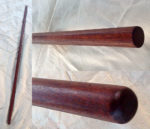
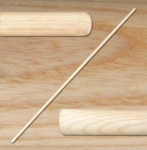
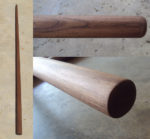
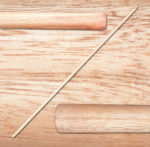

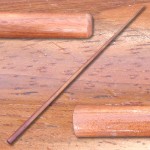
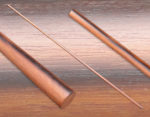
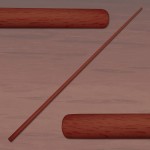
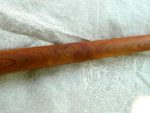
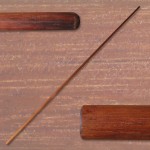
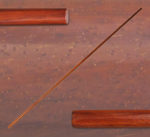
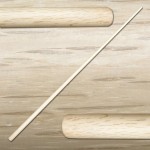
One thought on “Review of Pole Woods for Smash Training”